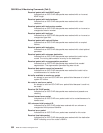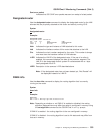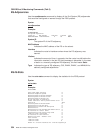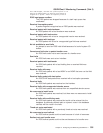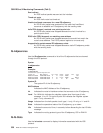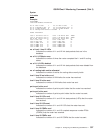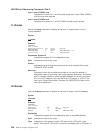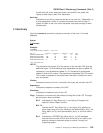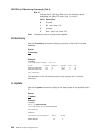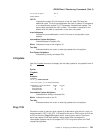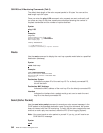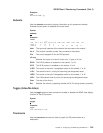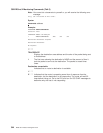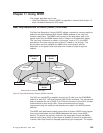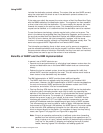
a prefix that this router advertises; prefix/I and prefix/E are routes that
require another hop to reach their destination.
Next Hop
Indicates the next hop a packet would take on its route. An * designation, or
a direct designation, refers to a directly-connected host off the router. A
system ID refers to the next router the packet must pass through to reach
its destination.
L1-Summary
Use the l1-summary command to display a summary of the level 1 link state
database.
Syntax:
l1-summary
Example:
l1-summary
Link State Database Summary - Level One
LSP ID Lifetime Sequence # Checksum Flags Cost
0000-9300-40B0-0000 0 0 0 0 1024
0000-93E0-107A-0000 384 CE 3CC9 1 0
AA00-0400-0504-0000 298 8E 40F1 B 20
AA00-0400-0504-0100 4 B8 A812 3 20
Total Checksum 25CC
LSP ID
This represents the system ID of the source of the link state PDU plus two
additional bytes. The first additional byte designates the type of update. 00
represents a non-psuedonode update. 01–FF represents a pseudonode
update for that circuit number. The second byte represents the LSP number.
This number is attached to the packet when the data is contained in more
than one packet.
Lifetime
Indicates the amount of time, in seconds, that router will maintain the LSP.
Sequence #
Indicates the sequence number of the LSP.
Checksum
Indicates the checksum value of the LSP.
Flags Indicates a one-octet value that reflects the flag field of the LSP. The eight
bits are broken down as follows:
Bit 8 Indicates the P flag. When set (1), the issuing IS supports the
optional Partition Repair function.
Bits 7-4
Indicate the ATT flag. When set (1), the issuing IS is attached to
other areas using one of the following: the Default Metric (bit 4), the
Delay Metric (bit 5), the Expense Metric (bit 6), or the Error Metric
(bit 7).
Bit 3 Indicates the LSPDBOL flag. When set (1), an LSP database
overload has occurred. An LSP with this bit set is not used by the
decision process to calculate routes to another I through the
originating system.
OSI/DECnet V Monitoring Commands (Talk 5)
Chapter 10. Configuring and Monitoring OSI/DECnet V 339




